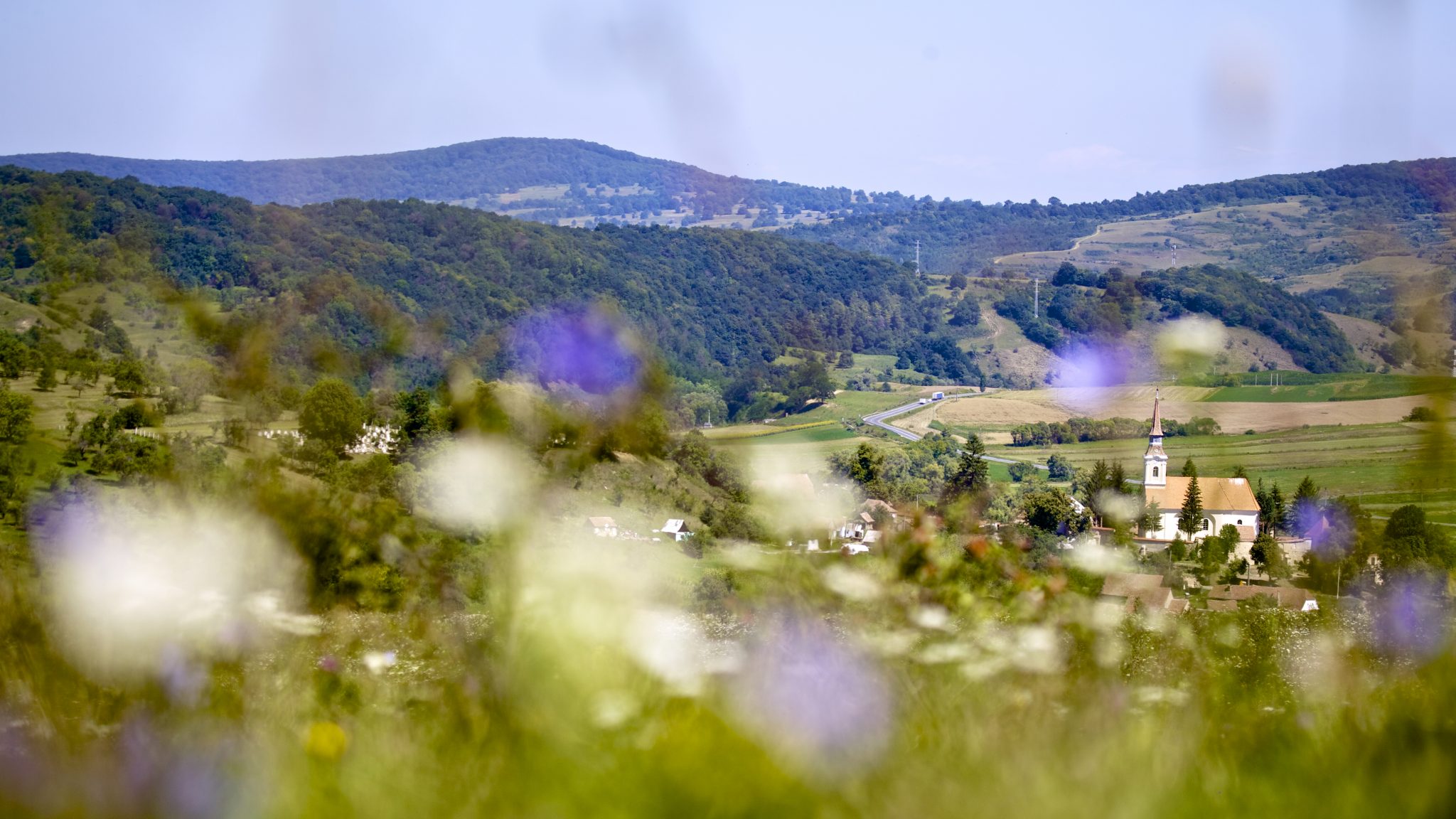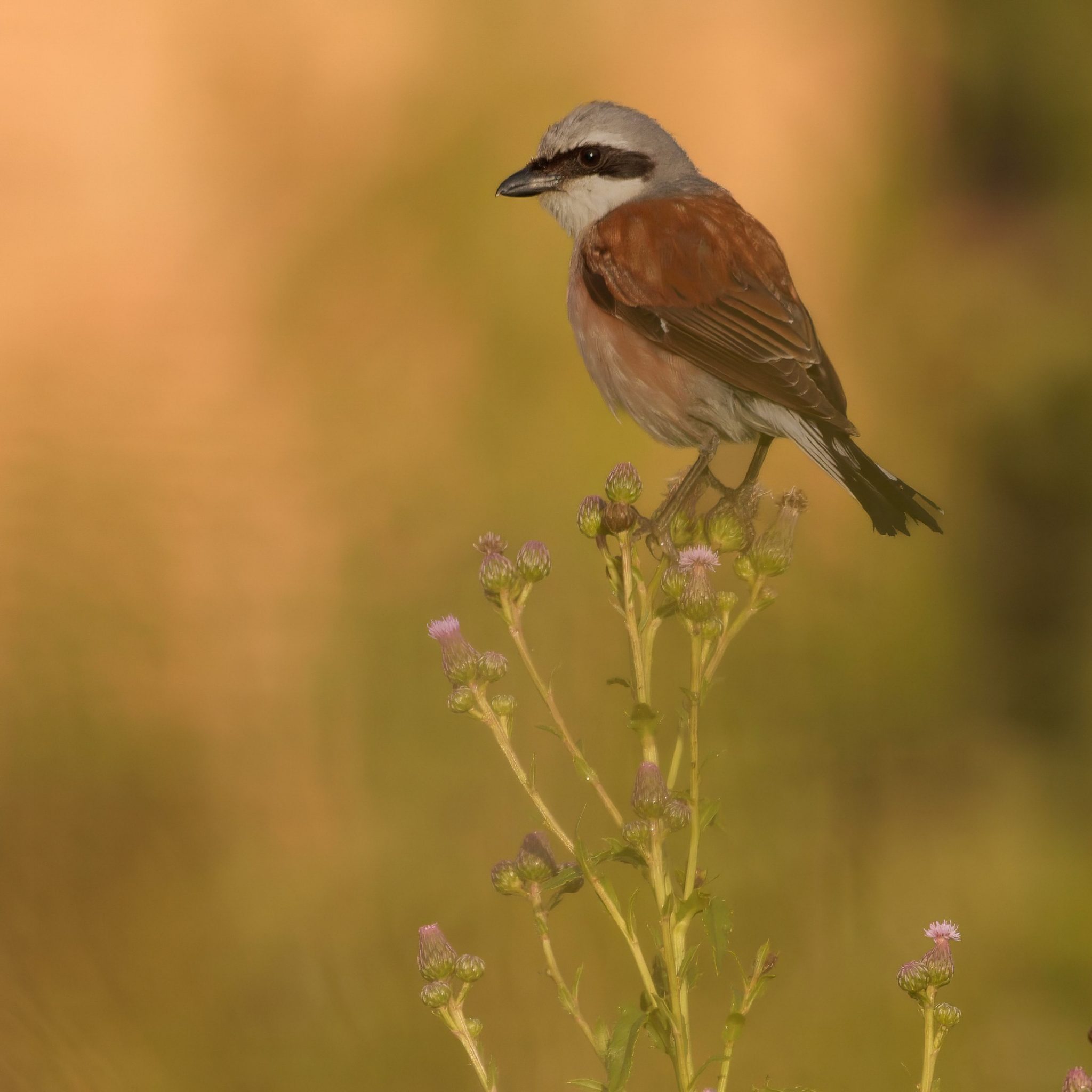

On a calm morning in the Transylvanian hills a burst of scratchy, rambling song emanates from a patch of scrub. The surrounding meadow hums with life, with the ground alive with grasshoppers and crickets and bright orange fritillaries flying low over the grasses. The expanse of meadows, from a distance resembles a Picasso painting with the splashes of colour representing the multitude of wild flower species. Eventually the songster perches atop a bush, revealing a dainty bird slightly larger than a sparrow with a long tail and slim hooked bill. This is a male red-backed shrike and with a rich chestnut back, a pinkish hue to the breast. A grey lapped head and a jet black bandit like eye stripe, they are a truly striking bird. After a brief rest, it dives down in to the meadow below and emerges with a juicy grasshopper for it’s hungry chicks.

Photo by Benjamin Sadd
Red-backed Shrikes are remarkable birds. One of 34 species in the family Laniidae, the shrikes could be described as ‘Mini-raptors’ and are colloquially known as butcher birds because of their bizarre and slightly gruesome feeding habits. Shrikes are carnivorous birds and having captured their prey, they impale the unfortunate individual (usually a small rodent or large insect) on a thorn bush or barbed wire fence known as a larder. This trait is shared by many shrike species globally and although it is unpleasant it is certainly effective and ensures a constant food supply. Red-backed shrikes are a charismatic bird which have been admired by generations of bird watchers and aside from their brutal larders, the ‘Shrike’ part of their name is thought to be derived from the old English term ‘Schive’ meaning ‘shriek’ referring to the bird’s shrill call.

Photo by Robin Denison-Pender
Up until the mid 20th century, Red-backed shrikes were a relatively common site throughout Southern England. However agricultural intensification leading to habitat loss through the removal of hedges and scrub, and wide spread insecticide use which resulted in a severe decline in large flying insects (the shrike’s favoured food), meant that they were extirpated as a regular breeding species in the UK by the mid-1990s. The decline through the latter half the 20th century was undoubtedly exacerbated by pressures on the migration to East African wintering sites as well. Despite sporadic breeding attempts since, such as at Dartmoor in 2013, and a regular passage of continental birds during migration, the shrikes have yet to recolonise Britain as a regular breeding species.

Photo by Bogdan Ciortan
Happily, there is hope with red-backed shrikes still a relatively common breeding species throughout most of Europe. They are especially abundant in Transylvania including the Tarnarva Mare basin where Operation Wallacea conducts research. The high prevalence of the species in this area is a result of the continuation of the traditional extensive agricultural management, providing ample food and habitat for the birds. With the rise of rewilding initiatives such as Knepp (where a male held territory for several weeks in spring 2017) there is every chance that this incredible species could once again make a comeback as a breeder in the UK.
Title photo by Robin Denison-Pender
Social Media Links